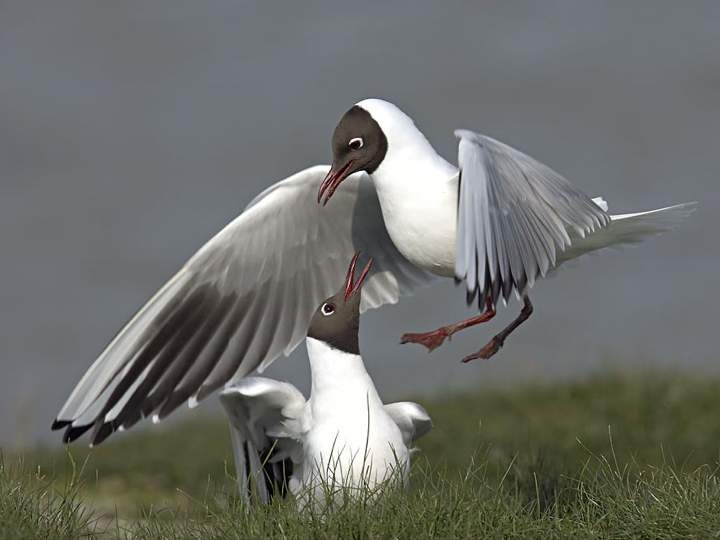Are Birds Reptiles? Unraveling The Evolutionary Link
Table of Contents
- The Traditional View Versus Modern Science
- Birds Are Dinosaurs: A Surprising Truth
- Shared Ancestry: The Archosaur Connection
- Cladistics: Reclassifying Reptilia
- Characteristic Reptilian Traits in Birds
- The Amniote Lineage and Evolutionary Order
- Distinguishing Features: What Makes Birds Unique?
- Beyond Classification: The Wonder of Avian Life
The Traditional View Versus Modern Science
For centuries, biology textbooks taught us that there were five distinct classes of vertebrates: fish, amphibians, reptiles, birds, and mammals. In this long-standing classification, birds were presented as a separate and unique group, largely defined by their feathers and ability to fly. The common understanding was that "Birds are neither reptiles nor mammals; they are a separate class of vertebrate animals called Aves." This clear distinction helped simplify the vast diversity of life. However, scientific understanding is constantly evolving, especially with advancements in genetics, paleontology, and the study of evolutionary relationships. Modern science, particularly through the lens of cladistics – a method of classifying organisms based on shared derived characteristics, especially genetic ones – has profoundly altered this view. It turns out that the traditional separation of birds from reptiles is, from an evolutionary perspective, highly artificial. The question "Are birds reptiles?" is no longer a simple yes or no, but rather a nuanced exploration of shared ancestry and evolutionary branching.Birds Are Dinosaurs: A Surprising Truth
One of the most groundbreaking discoveries in paleontology over the past few decades has been the undeniable link between birds and dinosaurs. It's not just that birds are closely related to dinosaurs; the scientific consensus now is that "they really are dinosaurs." Specifically, birds are the direct descendants of a group of feathered, bipedal dinosaurs known as paravians, which includes the famous *Velociraptor*. This means that when you see a pigeon strutting down the street or an eagle soaring overhead, you are, in essence, observing living dinosaurs. This realization fundamentally changes our perception. It's no longer a matter of birds evolving *from* dinosaurs in a distant past, but rather that a lineage of dinosaurs survived the mass extinction event 66 million years ago and continued to evolve, eventually giving rise to the incredible diversity of birds we see today. This direct lineage places birds firmly within the broader reptilian family tree, as dinosaurs themselves were reptiles.Shared Ancestry: The Archosaur Connection
To truly understand why birds are considered reptiles, we need to look back further into their shared ancestry. Birds, dinosaurs, and a group of modern reptiles all trace their lineage back to a common ancestor known as archosaurs. Archosaurs, meaning "ruling reptiles," were a group of diapsid reptiles that first appeared in the Middle Permian period. This group includes the ancestors of dinosaurs, pterosaurs, and crocodilians. The crucial point here is that birds and crocodiles, despite their obvious differences, share a more recent common ancestor with each other than either does with other reptiles like lizards or snakes. This deep evolutionary connection is a cornerstone of the argument for including birds within Reptilia. ### Crocodilians: The Closest Living Relatives Within the archosaur lineage, "crocodilians are dinosaurs and birds' closest living relatives." This might sound counter-intuitive given the vast differences in appearance and lifestyle between a bird and an alligator, but genetic and anatomical evidence strongly supports this claim. Both birds and crocodilians evolved from archosaurs, and they retain certain shared characteristics that set them apart from other reptiles. This close relationship underscores the idea that birds are not just vaguely related to reptiles, but specifically to a very ancient and successful reptilian lineage.Cladistics: Reclassifying Reptilia
The shift in how we classify birds stems largely from the adoption of cladistics in taxonomy. Cladistics aims to group organisms based on shared ancestry, forming monophyletic groups – groups that include a common ancestor and all of its descendants. Under a cladistic classification, if you define "reptiles" as a group that includes their common ancestor, then to exclude birds would make the group "paraphyletic" (meaning it excludes some descendants of that common ancestor). Therefore, "In 2004, a new cladistic classification of Reptilia came to include birds." This reclassification isn't about changing what birds *are* biologically, but rather about refining our scientific understanding of their evolutionary relationships. It means that from a modern phylogenetic perspective, birds are indeed considered part of the Reptilia clade, or group. This is a scientific redefinition of the term "reptile" to reflect evolutionary history more accurately.Characteristic Reptilian Traits in Birds
Beyond the deep evolutionary history, birds also exhibit numerous physical and physiological characteristics that are distinctly reptilian. While their feathers are a unique avian adaptation, "aside from their feathers, most birds are characteristically reptilian." This observation highlights that underneath the plumage, the fundamental body plan and many biological processes of birds align closely with those of reptiles. Consider the skeletal structure, particularly the skull and limb bones, which show clear homology with dinosaur and other reptilian forms. Birds also share reproductive strategies and certain anatomical features that are common among reptiles but absent in mammals. ### The Tough-Shelled Egg One of the most obvious shared characteristics between birds and many reptiles is their mode of reproduction: egg-laying. "The tough leathery eggs of reptiles and birds are called shells." These shells are not just any outer covering; "These shells are made of calcium carbonate and protect the developing embryo inside." This hard, protective casing is a key adaptation that allowed both groups to reproduce on land, independent of water, a significant evolutionary leap. While the "Data Kalimat" mentions "Animals that lay eggs, such as birds and reptiles, have external fertilization where the embryo develops inside an egg outside the mother's body," it's important to clarify that birds and most reptiles actually have internal fertilization. The embryo then develops *externally* within the egg laid by the mother. This shared strategy of laying hard-shelled eggs is a strong indicator of their common ancestry as amniotes. ### The Cloaca: A Shared Orifice Another significant anatomical commonality is the cloaca. "All birds, reptiles, and amphibians possess this orifice, from which they excrete both urine and feces, unlike placental mammals, which possess two separate orifices for evacuation." This single opening for digestive, urinary, and reproductive tracts is a primitive vertebrate feature retained by birds and reptiles, distinguishing them from most mammals. This shared anatomical trait further solidifies their evolutionary relationship.The Amniote Lineage and Evolutionary Order
To fully grasp the "Are birds reptiles?" question, we must understand the concept of amniotes. "Birds, reptiles, and mammals all belong to a group of vertebrates called amniotes, which split off from amphibians." The development of the amniotic egg – an egg with specialized membranes that protect the embryo – was a pivotal evolutionary innovation. It allowed vertebrates to lay eggs on land, freeing them from aquatic environments for reproduction. This adaptation was crucial for the diversification of life on land. The "Data Kalimat" also provides a clear evolutionary timeline for vertebrates: "The five classes of vertebrates (fish, amphibians, reptiles, birds, mammals) evolved in the following order: Fish appeared first, followed by amphibians, then reptiles, birds, and finally." This sequence highlights that reptiles emerged before birds, and birds then diversified from within the reptilian lineage. "Amniotes split into two groups soon after they evolved," leading to the synapsids (which eventually gave rise to mammals) and the sauropsids (which include reptiles and birds). This branching pattern is why birds are nested within the sauropsid lineage, making them, from a cladistic perspective, reptiles.Distinguishing Features: What Makes Birds Unique?
While the evolutionary evidence overwhelmingly places birds within Reptilia, it's equally important to acknowledge their unique adaptations. Birds are incredibly diverse and have evolved specialized traits that set them apart. "Birds are vertebrate animals adapted for flight." This adaptation, involving lightweight bones, powerful muscles, and, crucially, feathers, is their most defining characteristic. "Many can also run, jump, swim, and dive," showcasing their versatility. "Some, like penguins, have lost the ability to fly but retained their wings," demonstrating how even unique avian traits can undergo further evolution. Their unique physiology includes a highly efficient respiratory system and a fast metabolism that supports endothermy (warm-bloodedness). While "Some birds produce that is often called croup milk, that is a partially digested food mixture, and they regurgitate it to their young, but it is not true milk," this is an example of convergent evolution, mimicking mammalian milk but with a distinct biological basis. ### Warm-Blooded, Fuzzy Reptiles Perhaps the most striking way to conceptualize birds in this new light is the statement: "Birds on the other hand are the only type of warm blooded, fuzzy reptiles alive today." This pithy description encapsulates the paradox: they are reptiles by ancestry and many shared traits, yet they possess a unique combination of endothermy and feather covering that makes them distinct. This combination allows them to thrive in a vast array of environments worldwide. "Birds are found worldwide," from the "Black bears, desert bighorn sheep, and mountain lions roam in Arizona" (where birds also thrive) to the poles, showcasing their incredible adaptability. Their ability to migrate, with "millions of birds attempt long, perilous journeys between their summer breeding and wintering grounds," further highlights their unique physiological capabilities.Beyond Classification: The Wonder of Avian Life
Understanding that "Are birds reptiles?" has a nuanced answer enriches our appreciation for the natural world. It's not just about categorizing, but about tracing the incredible journey of life through time. The dynamic nature of bird life, from the "Galápagos yellow warblers" responding aggressively to intruders, showcasing complex behaviors, to the majestic "Barry the bald eagle" soaring across continents, or even the fascinating story of "giant panda Bao Li" traveling globally (though a mammal, it highlights global animal movements), all contribute to the tapestry of life. Even though "all birds have wings, a few species can't fly," their shared evolutionary heritage with reptiles remains undeniable. This new understanding doesn't diminish the wonder of birds; it enhances it, showing them as the magnificent, surviving lineage of the dinosaurs, a testament to evolution's power and ingenuity. In conclusion, while birds were traditionally classified separately, modern cladistics and overwhelming scientific evidence confirm that birds are, from an evolutionary perspective, a highly specialized group of reptiles. They are the living descendants of dinosaurs, sharing a common ancestor with crocodilians and exhibiting numerous reptilian characteristics, all while possessing unique adaptations like feathers and warm-bloodedness. This understanding deepens our connection to the ancient past and celebrates the incredible diversity of life on Earth. What are your thoughts on this reclassification? Does it change how you view birds? Share your insights in the comments below, and don't forget to explore more of our articles on evolutionary biology and the wonders of the animal kingdom!
14 Types of Birds with Webbed Feet (with Pictures)

Birds Have Feelings* – Silly Sutras

Arctic Tern Bird Facts (Sterna paradisaea) | Birdfact